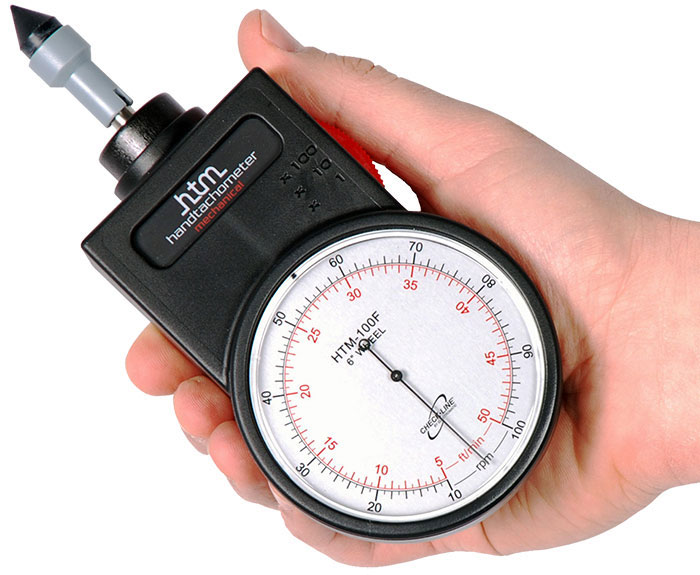The Significance of a Tachometer in Checking Engine Rate and Performance in Automotive Applications
In the realm of vehicle design, the tachometer stands as a pivotal tool in the vehicle driver's toolbox, supplying a straight window into the internal workings of a lorry's engine. Beyond its feature as a simple scale of changes per minute (RPM), the tachometer serves as an important tool for enthusiasts and experts alike, providing real-time insights into engine efficiency and wellness.
Importance of Keeping Track Of Engine RPM
Keeping track of engine RPM, or revolutions per minute, is a crucial aspect of automobile maintenance and performance assessment. Engine RPM directly associates with the rate at which the engine's crankshaft revolves, suggesting exactly how rapidly the engine is running - tachometer. By keeping track of RPM, mechanics can assess the wellness of the engine, identify possible problems, and fine-tune performance. An unusual RPM analysis might indicate problems such as engine misfires, faulty trigger plugs, or problems with the fuel delivery system. Continually high RPM analyses could indicate hostile driving routines or the need for a greater equipment shift to boost gas effectiveness.
Additionally, checking engine RPM is vital for efficiency assessment in auto racing and high-performance lorries. In summary, keeping an eye on engine RPM is not just crucial for spotting issues however also for enhancing engine performance in numerous automobile applications.

Advantages of Real-Time Information
In auto applications, real-time data plays a crucial role in offering immediate understandings right into the efficiency and problem of the automobile. By continually checking numerous criteria such as engine rate, temperature level, gas intake, and extra, real-time information uses countless advantages that add to improved effectiveness and security when driving.
In addition, real-time data facilitates efficiency optimization by supplying immediate responses on driving routines and engine effectiveness. Drivers can adjust their actions in real-time based on this info to achieve far better gas economic climate and prolong the lifespan of their automobile.

Furthermore, real-time information plays an important duty in contemporary auto diagnostics, allowing technicians to swiftly diagnose and attend to malfunctions. This brings about decreased downtime, reduced maintenance prices, and eventually, boosted overall automobile integrity and longevity (tachometer). By taking advantage of the power of real-time information, automobile stakeholders can make educated choices that positively impact both the performance and long life of the vehicle
Influence On Equipment Shifts
Effective gear changes in vehicle applications considerably affect general performance and driving experience. The tachometer plays a crucial function in enhancing gear changes by supplying real-time engine rate information to the motorist. When their explanation coming close to the redline on the tachometer, it signals the driver to upshift to stop over-revving the engine and triggering prospective damages. On the various other hand, downshifting at the ideal minute can assist preserve the engine in its power band, making certain receptive velocity when required.
In addition, the tachometer help in attaining smoother equipment shifts, especially in manual transmissions. By keeping track of engine speed, drivers can perform gear changes at the optimum RPM array, lowering snagging movements and reducing wear on the transmission components. This precision in gear changes not just boosts driving convenience however likewise contributes to fuel performance.
Enhancing Gas Performance
Provided the important function the tachometer plays in optimizing gear changes for efficiency and engine health and wellness, it directly contributes to making best use of gas performance in vehicle applications. By supplying real-time comments on engine rate, the tachometer aids chauffeurs in maintaining one of the most effective RPM range for gas economy. When vehicle drivers constantly keep track of the tachometer and readjust their driving behaviors appropriately, they can avoid unneeded gas usage triggered by over-revving or carrying the engine.
Moreover, the tachometer aids explanation drivers determine the most fuel-efficient equipment to be in at any kind of given minute, avoiding the engine from functioning more difficult than needed. This is particularly critical during velocity and cruising, where remaining in the best equipment can dramatically affect gas efficiency. Furthermore, the tachometer can alert vehicle drivers to possible mechanical problems that could be negatively influencing gas economy, such as a slipping clutch or a clogged up air filter. In final thought, the tachometer functions as an important tool in boosting gas effectiveness by promoting optimal driving habits and identifying areas for enhancement in the lorry's performance.

Optimizing Engine Durability
The tachometer's duty in keeping track of engine rate and performance is crucial in guaranteeing the long life of vehicle engines. Monitoring the tachometer enables drivers to remain within the recommended RPM array for their vehicle, protecting against unnecessary pressure on the engine and extending its life expectancy.

Final Thought
In final thought, the tachometer plays a critical function in monitoring engine speed and efficiency in automobile applications. By giving real-time data on RPM, it permits efficient gear changes, enhanced fuel effectiveness, and maximized engine long life. This tool is necessary for keeping optimal engine efficiency and ensuring the general functionality of a vehicle.